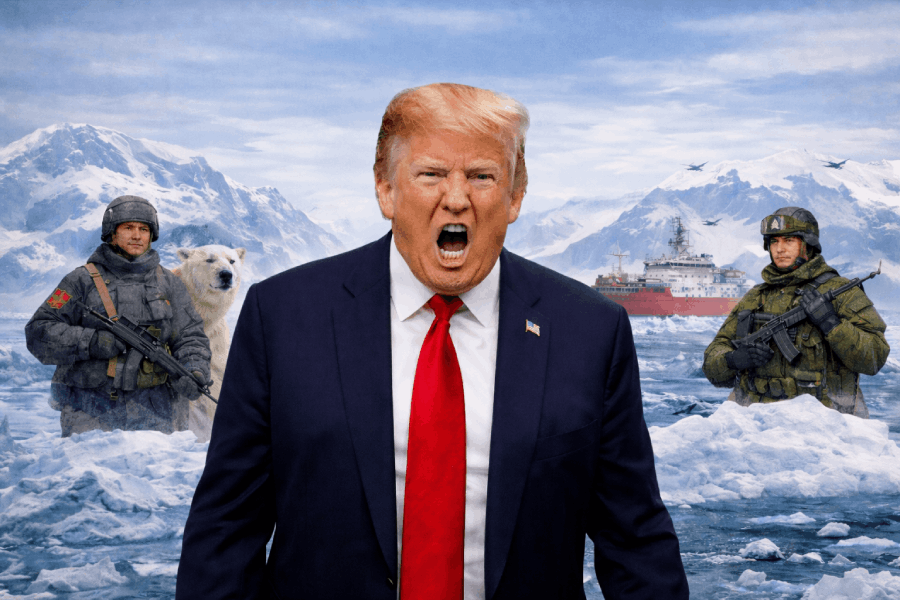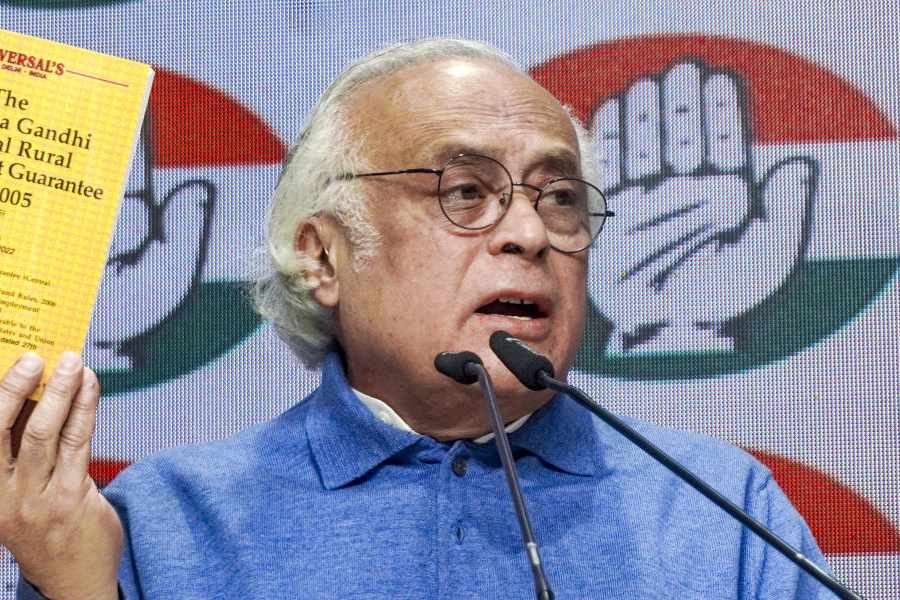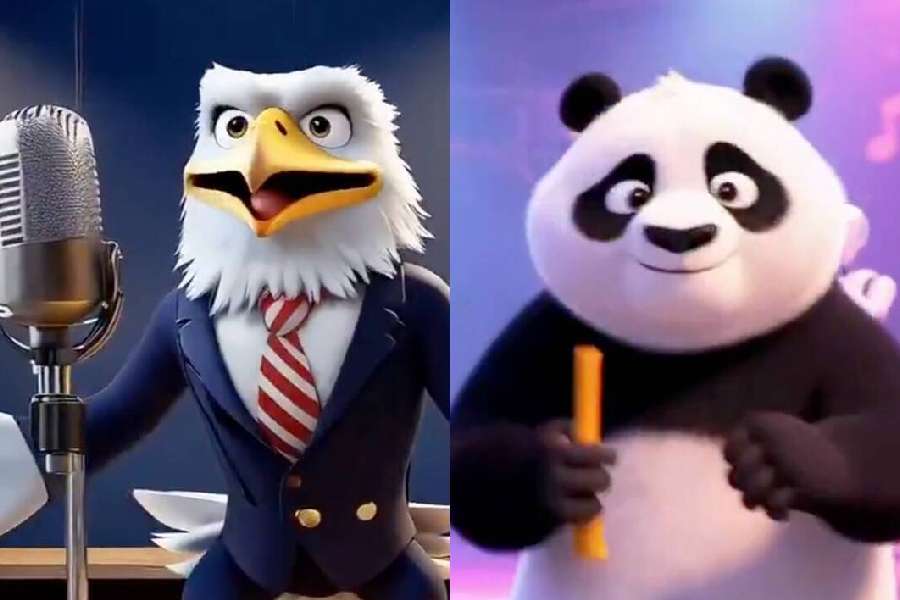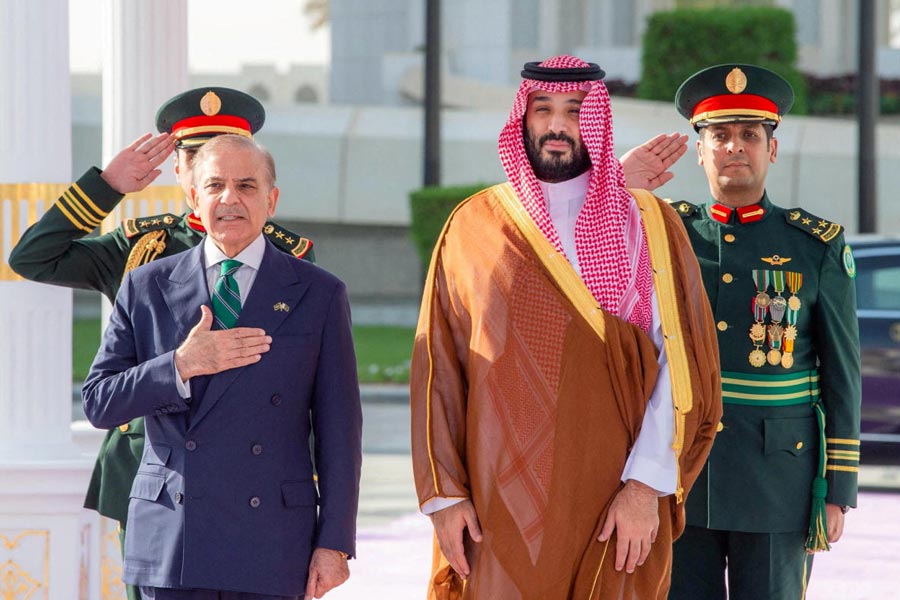|
|
| Solitary thoughts |
Now the New Year reviving old Desires,/ The thoughtful Soul to Solitude retires,/ Where the White Hand of Moses on the Bough/ Puts out, and Jesus from the Ground Suspires.
It’s not the healing touch of Moses and Jesus that came most readily to mind as the sands of 2007 trickled out but the Alexandrian poet of death and decay who was fated never to escape the despairing admonition,
“There’s no new land, my friend, no/ New sea; for the city will follow you,/ In the same streets you’ll wander endlessly/ The same mental suburbs slip from youth to age,/ In the same house go white at last —/ The city is a cage.”
The argument and acrimony over Singur and Nandigram, retail stores and the civil nuclear deal with the United States of America were sad reminders that in some respects time stands still. Nandigram would not have been drenched in blood if India had not turned a deaf ear to Manmohan Singh’s exhortation all those years ago that there was no need any longer to tilt at the windmill of the East India Company. That was when P.V. Narasimha Rao proclaimed the dawn of a new age that, dazzling boasts notwithstanding, still eludes us.
Oh yes, I know the world has been even more ecstatic these past 12 months than our own government’s gushing about “Incredible India”. The giant General Electric, we were told, could struggle in the saturated American market only because it was booming in India. Ratan Tata seemed bent on buying up the world. Mukesh Ambani beat Bill Gates and Lakshmi Mittal in the race to be the world’s richest man. But looking back, the year when New Delhi hoped to achieve a nationwide zero school drop-out rate (nearly 53 per cent in 2002) yielded somewhat less than it promised. It was a year of paradoxes. Of growth and poverty. Of a rejection of some of the assumptions of the Nehruvian (for want of a better word) past and the search for a new self-image crafted as much by Goldman Sachs as Narendra Modi.
Over it loomed the tantalizing question: who really governs India? The old Europe was said to be in the grip of a clique of money managers dubbed the Gnomes of Zurich. Here, 60 Left Front parliamentarians seemed to be the tail that wagged the government dog when the United Progressive Alliance tottered over the nuclear deal. Within the UPA, the respective roles of prime minister and chairman remained “a puzzlement” (as the King of Siam would have said) for those who see Manmohan Singh as the only leader whose grasp of economics is sufficiently leavened by a sense of humanity to ensure that globalization, with all its benefits, stops short of being “every man for himself, and the devil take the hindmost”.
In the dying embers of 2007 it seemed not so much a question of who holds the balance within the UPA as whether the UPA would be left with much to hold 18 months hence. Before the Bharatiya Janata Party’s landslide victory in Himachal Pradesh brought 10 states, singly or in coalition, under its control, Kanchan Gupta argued in Rediff that far from being a manifestation of Hindu nationalism, the vote for Modi was a vote for farmers to pay their electricity bills. Apparently, those who drafted the BJP’s election manifesto in Gujarat proposed an amnesty for defaulters but the chief minister put his foot down. It’s a nice spin but there were no defaulting farmers in the Calcutta Club audience that gave Modi a rapturous ovation some time ago.
Whether or not the Gujarat vote was a referendum on his economic agenda, there is no denying that Modi is emerging as a hero for large sections of a populace for whom the divinity of Bharat Mata personifies nationalism. They yearn for a leader whose politics gives them a creed to believe in. Mohandas Karamchand Gandhi was such a man; Jawaharlal Nehru, who warned that the most dangerous form of communalism was the communalism of the majority, was not.
It is another of India’s paradoxes that the country can surge ahead while reinventing traditional crutches. Pooja Chitgopekar’s selection as first runner-up in last month’s Miss Earth-Air beauty pageant in Manila was a symbolic reminder of that interaction between body and soul, the national indecision between hankering for the pleasures of the flesh and aspiration to the lofty life of the spirit. Others, especially India’s friends in the West, contribute in no small measure to that dilemma between earth and air. You and I may rejoice in the prospect of an inexpensive car emerging from Tata’s Singur factory to create jobs and restore industry in West Bengal. But Tom Friedman, India’s champion abroad, pulled a long face in The New York Times about the project’s “enormous … energy and environmental implications” for India and the world. “Cheap conventional four-wheel cars, which would encourage millions of Indians to give up their two-wheel motor scooters and three-wheel motorized rickshaws, could overwhelm India’s already strained road system, increase its dependence on imported oil and gridlock the country’s megacities.”
In short, cut off the head to cure a headache. Lalu Prasad, who once said good roads and electricity were unnecessary for India’s poor, would have clapped him on the back. So would those imperial strategists who turned down Mountbatten’s wartime request for large-scale parachute production in India because of the “desire to keep India as a market for British manufactured goods after the war”. Reading Friedman’s jeremiad reprinted in Singapore’s Straits Times, I wondered at the importance we attach to propaganda which alone makes us dwell so fondly on the handful of Europeans and Americans who might have a kind word to say about India.
The ultimate repository of power within the UPA is only one of several unanswered questions carried forward into 2008. The nuclear deal controversy is another. The bigger question people should ask is when — if ever — GE’s profitability in India or Mittal’s achievement abroad, Ambani’s Rs 2,49,108 crore fortune and Tata’s global purchases will begin to impact on the lives of more than 300 million Indians who languish on less than a dollar a day. I don’t mean the undoubtedly estimable contributions GE or India’s magnates make to charity, but a streamlined economic system in which wealth generation at one end also revitalizes the productive process all down the line to create jobs for millions of others.
Manmohan Singh condemned conspicuous consumption in 2007, even before Ambani’s $60 million airbus for his wife; he could follow up that admonition in 2008 by reminding the tycoons of Indian industry that their international eminence should be reflected at home in substantial investment for infrastructure, housing, education and medicare. He is in a privileged position to do so, not only because he is prime minister but also because he took justifiable pride once in taking the fiscal measures that made it possible for billionaires like Azim Premji (then at the top of the rich Indians league) to emerge. No one is better qualified to demand capitalism with a human face.
That is of the body, but what of the spirit? The tragedy of Rizwanur Rahman and Priyanka Todi speaks of an anguish that may not be unconnected with the electoral outcome in Gujarat and Himachal Pradesh. It’s a worrying thought that so many Indians feel dissatisfied with the concept of India that the Constitution enshrines and that we should, so late in the day, debate again the question of a national identity that led to unresolved friction between Nehru and Rajendra Prasad.
Hindutva, Nandigram, the nuclear agreement and all those other residual controversies suggest that India is doomed forever to fight yesterday’s battles. There is no escape from a suffocating past. As Constantine Cavafy lamented, “The city is a cage.”












